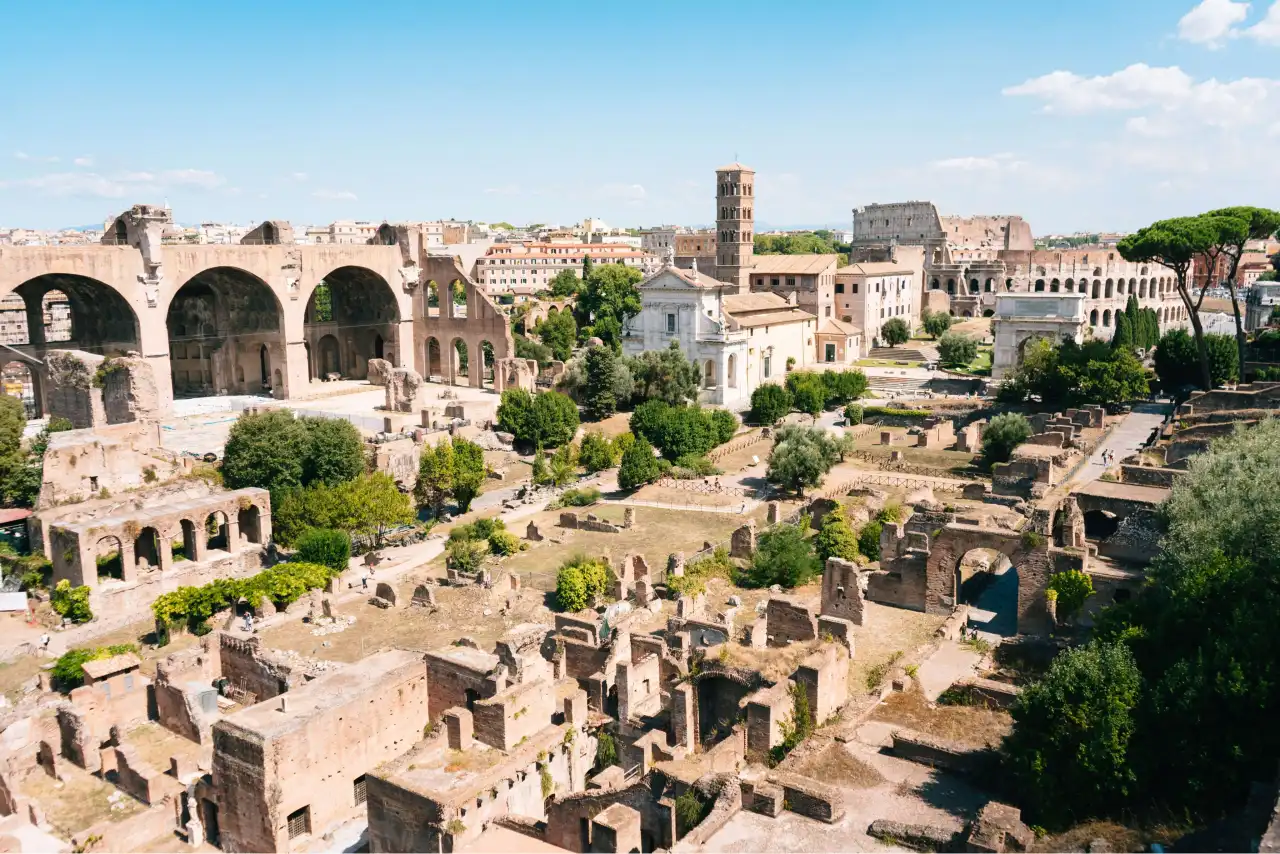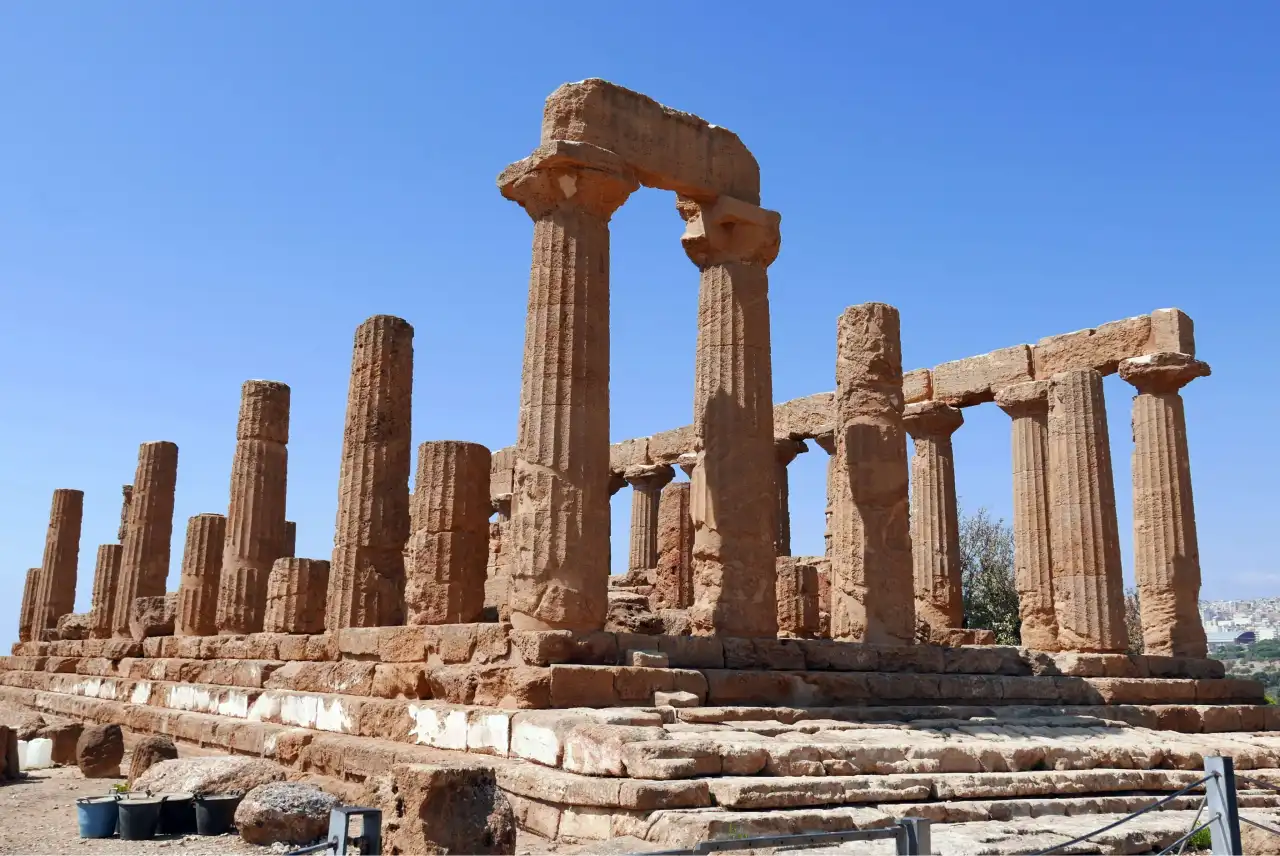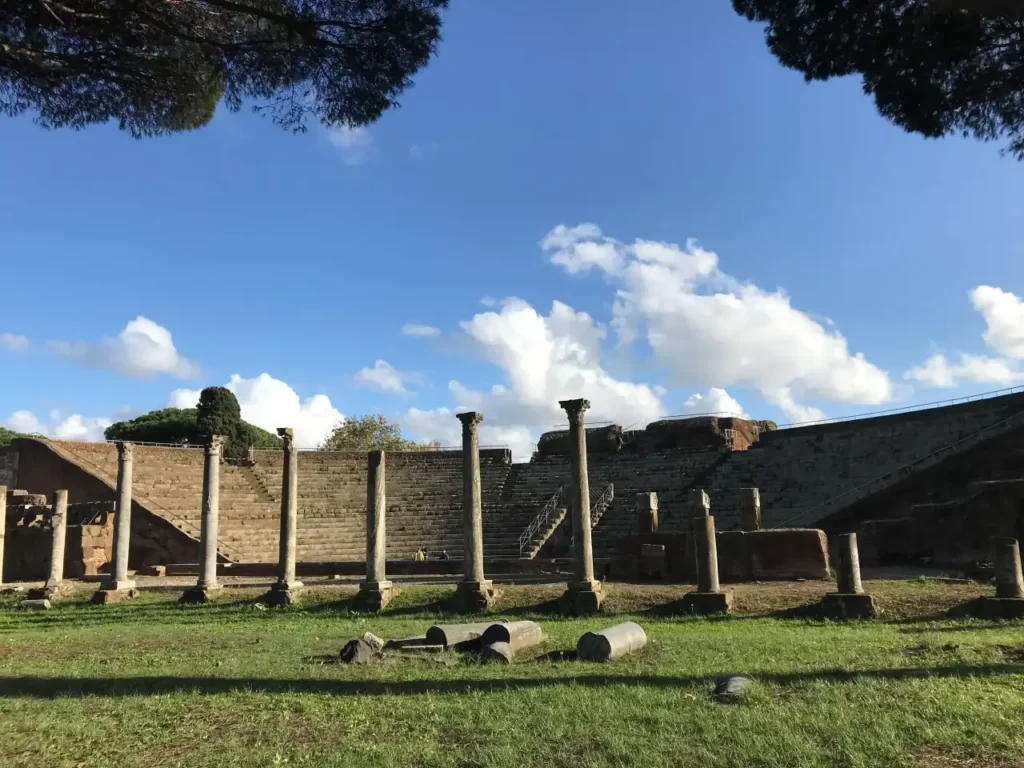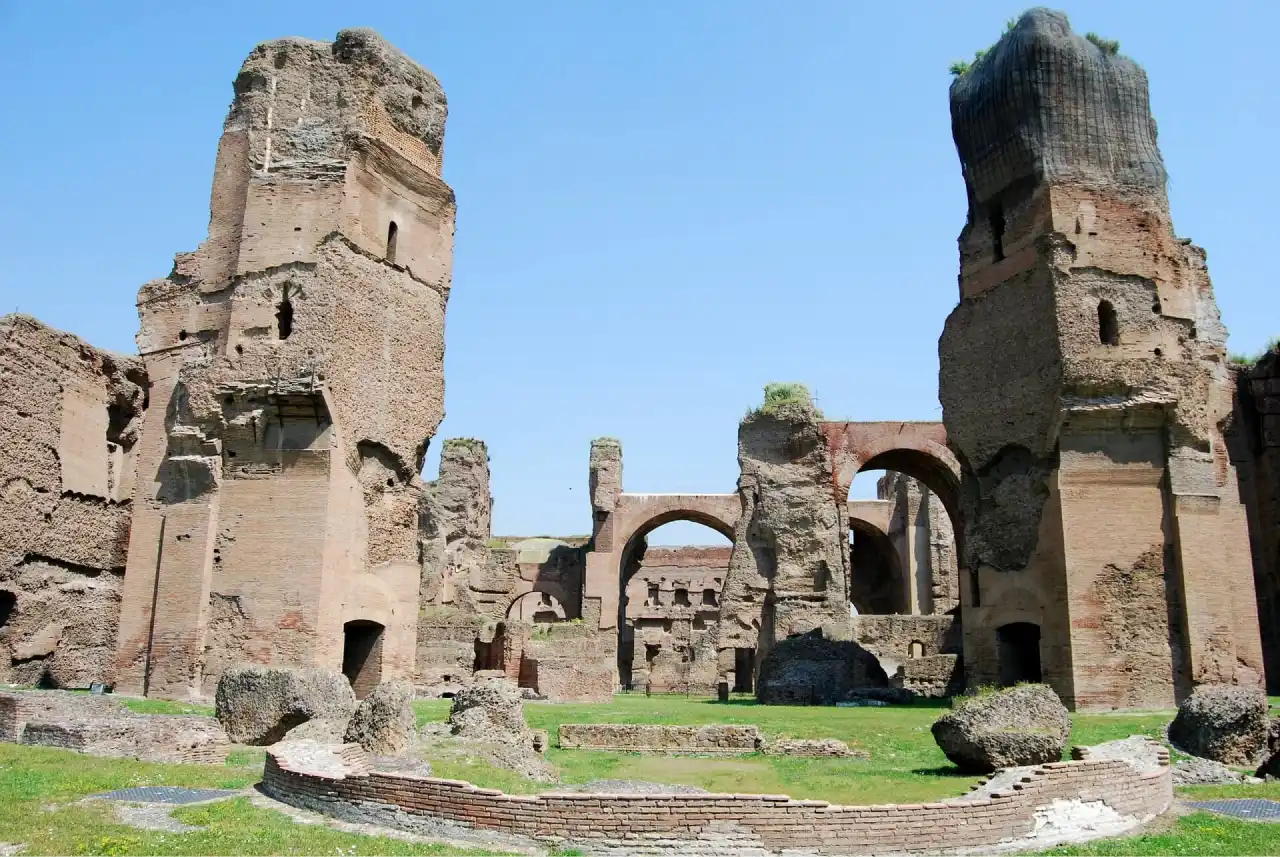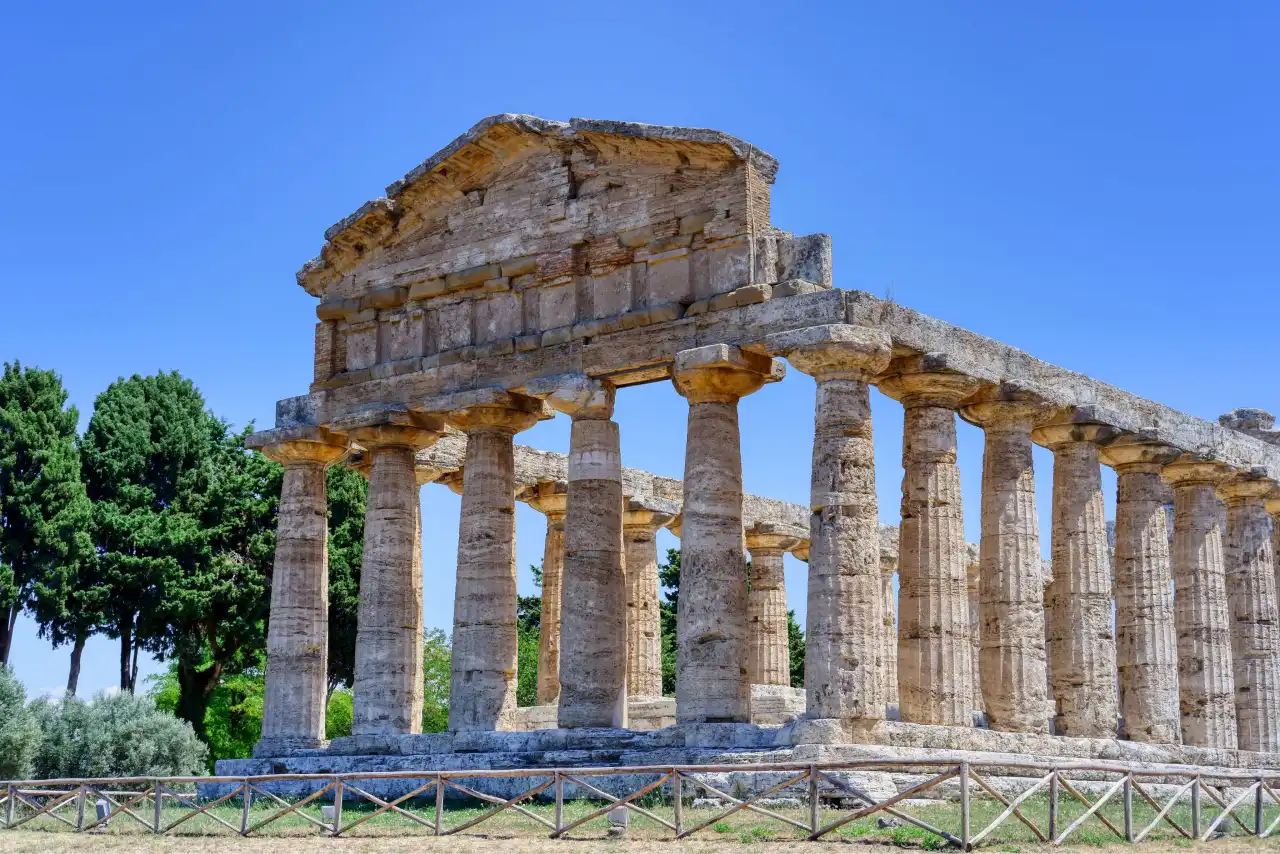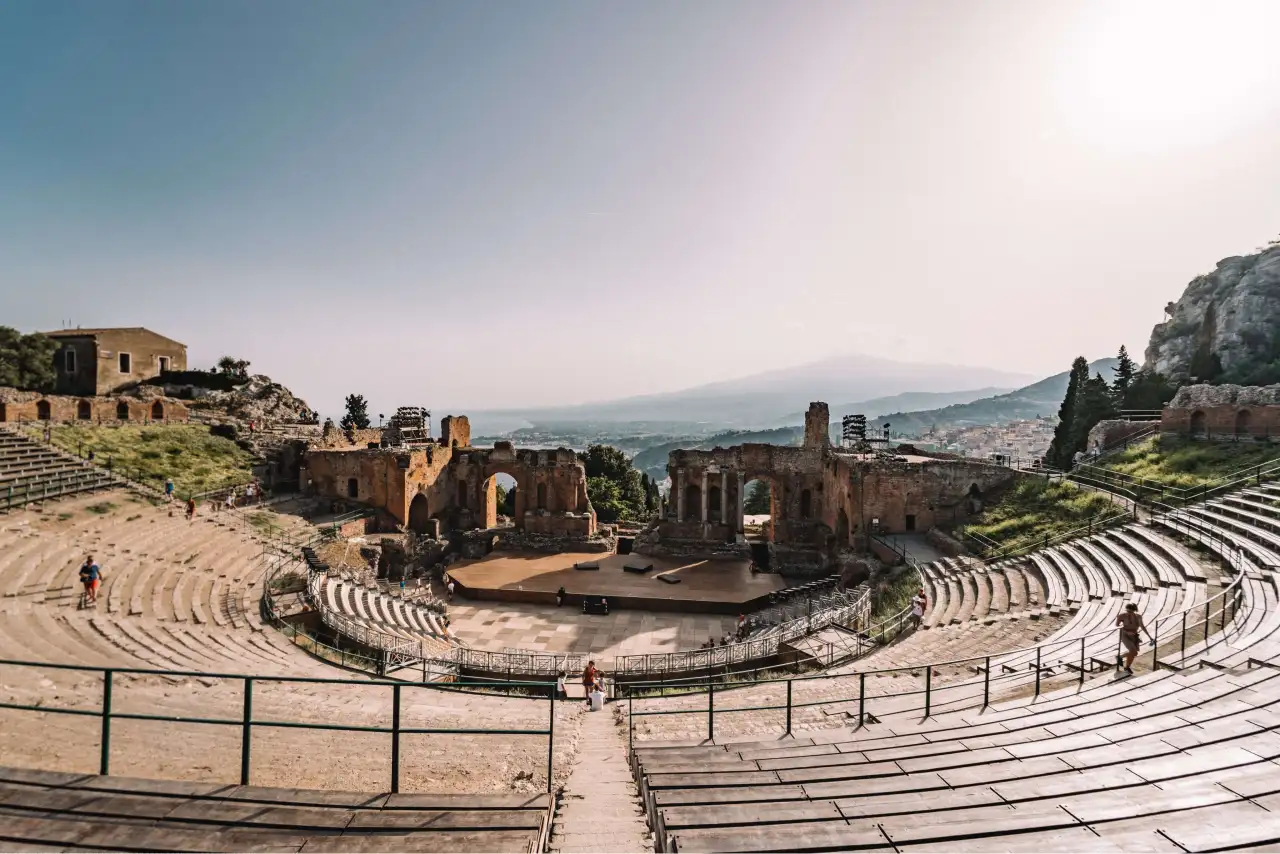Italy is the country with some of the most fascinating archaeological sites in the world. Since I was born in Croatia, near the Italian border, my parents often took me to Italy when I was younger. I always admired their hedonism, the best coffee, and the picturesque small towns. But for the most part, I fell in love with that country because of its art and cultural heritage. No wonder I decided to study archaeology years later. I must admit I still didn’t visit most of the sites in Italy that are on my bucket list. But I’m sure I will soon. And today, I will share my top 10 archaeological sites in Italy with you.
Top 10 archaeological sites in Italy
Pompeii and Herculaneum
Pompeii and Herculaneum, situated near Naples, are among the most famous archaeological sites in the world. That is due to the tragedy that happened in both ancient cities. Pompei and Herculaneum were located near Mount Vesuvius. Unfortunately, Vesuvius erupted in AD 79 and covered nearby cities with a few meters of volcanic ash. The ash preserved the buildings, arts, and even people underneath. Pompei had more than 10,000 inhabitants at the time!
Since the sites stayed almost intact due to the ash, they offer a lot of information about the everyday life of people living in Pompeii and Herculaneum. It’s like they kept living and telling their stories even after all those years.
⤷ TIP: My suggestion is to book a private tour with some of the local archaeologists in advance. That way you will be able to learn even more about the history of both cities. And all that from an expert! You can check out the tours here.
Roman Forum (Forum Romanum), Rome
“A thousand roads lead a man forever toward Rome“
Alain de Lille
Two thousand years ago, Rome was the most vibrant, modern, and urban city in the world. And its central part was its Forum called Forum Romanum.
Roman Forum was situated between the Palatine and Capitoline Hills. Both profane and sacral buildings were located there. Today, it presents the ruins of temples, basilicas, and monuments from various periods.
If you love historical sites be sure to put Forum Romanum on your list. However, if you visit it during summertime, I suggest you pick the early morning or the afternoon because of the heat.
⤷ TIP: Check out some of the guided tours around Roman Forum on a link here.
Domus Aurea, Rome
Built under the rule of Nero, Domus Aurea is a palace, located on Oppian Hill in Rome. Its name translates as the Golden House.
After the great fire that occurred in AD 64, Nero had the idea of reconstructing the whole Rome in Greek style. Domus Aurea was no exception. He imagined it as the extension of his former palace, Domus Transitoria. The Roman emperor wanted the complex to consist of baths, fountains, gardens, pavilions, an artificial lake, an enormous statue of himself, etc.
Nero had a huge plan, as you can see. But his inheritances changed the area a lot in the following periods. Domus Aurea is now open to the public and you can still see many parts of it. The former palace is very close to the Colosseum and the Roman Forum.
⤷ Read more: My travel diary – Four days in Rome
Hadrian’s Villa (Villa Adriana), Tivoli
I first heard of Hadrian’s Villa during my second year of University. Our professor talked about it with so much admiration. I still remember how my friend and I decided we must travel together to Tivoli when the opportunity arises.
Hadrian ordered the construction of his villa in Tiburtine Hills, Tivoli, very close to Rome. So if you find yourself in the Italian capital, this could be a perfect day trip away from the crowd. The complex was built in the 2nd century AD and consisted of baths, gardens, pools, libraries, theatres, breathtaking sculptures, etc.
Today Hadrian’s villa is protected by UNESCO as a World Heritage property. And it’s for sure one of the top 10 archaeological sites in Italy.
⤷ Read more: Vatican Travel Guide
Valley of the Temples (Valle dei Templi), Sicily
Valley of the Temples in Agrigento is an archaeological site and Park situated on the largest island in Italy – Sicily. Archaeological Parks are actually important sites opened to the public. They usually offer guided tours and other educational and fun facilities.
Agrigento was founded as a Greek colony and is most famous for the magnificent remains of temples built in the Doric style. The Archaeological Area of Agrigento is listed by UNESCO since 1997.
If you love to explore classical sites, be sure to visit the Valley of the Temples. You can enjoy wandering through the temples by booking a tour or choosing the audioguide. There is also a coffee shop for those who wish to appreciate a cup of Italian coffee while admiring Greek temples. On top of it all, this Archaeological Park is pet friendly!
Etruscan tombs, Cerveteri and Tarquinia
Do you know who lived close to the Italian capital before the Romans? It was the Etruscans! They are mostly known for their funerary practices and beautifully painted chamber tombs. The best thing is: a lot of them are now open to the public!
The necropolis of Cerveteri, are called Banditaccia and the ones of Tarquinia, Monterozzi. For example, Monterozzi consisted of around 200 painted tombs! One of the most fascinating is for sure the Tomb of the Triclinium in Monterozzi. It has only one chamber, but with breathtaking wall decorations. I still remember I was speechless when first read about it at University. And I guess it will always be one of my favourites.
⤷ TIP: If you decide to visit Monterozzi, don’t skip the Tarquinia National Museum. It’s dedicated to the Etruscans and features artifacts from the Monterozzi necropolis. I suggest you visit the archaeological site first and the Museum second. Finally, you can buy a gelato (Italian ice cream) and wander a bit through the streets of this charming city.
Ostia Antica, Ostia
Ostia was an important port in the Roman period. It is situated only a few kilometres from the sea. Therefore, it’s a perfect summer destination in Italy for all archaeology enthusiasts.
The oldest remains on this archaeological site are from the Roman castrum (armed camp) from the 4th century BC. Later, Ostia became a major Roman port and lost its military purpose. And at one point, it had around 50 000 inhabitants!
Today, you can admire the remains of the former seaport if you visit the Archaeological Park of Ostia Antica. You can get there easily by train. Also, the train can be the best solution since the Ostia Antica station is located just across the Park. My other suggestion is to purchase the tickets before your trip to Ostia. That way you will have more free time when you arrive. You can check out the tickets on the link here.
Baths of Caracalla, Rome
The Baths of Caracalla were the massive public baths in ancient Rome. Their construction started during the reign of the emperor Septimius Severus, Caracalla’s father. However, they were completed later, during the reign of Caracalla himself.
The Latin name for the Roman baths is thermae. And in a way, they’re similar to modern thermal baths and luxurious spa centres. For example, they had underfloor heating! Romans had their special way of heating by producing hot air under the floor. That system is called the Hypocaustum (hypocaust). So, we can only imagine how elegant and classy Caracalla’s baths looked in his time. And how much people from ancient Rome enjoyed spending time in them.
⤷ TIP: During summertime, opera shows and concerts often take place at this archaeological site. This year is no exception. So, if you are a fan of classical music as much as architecture, listening to Carmen by Bizet inside Caracalla’s baths should be a blast!
Paestum, Salerno
Paestum is a Latin name for the Greek city of Poseidonia. Nowadays, it’s an Archaeological Park (together with ancient Velia) known for its magnificent Doric temples. If you visit Paestum don’t skip the National Archaeological Museum of Paestum. The museum published an interesting guide about it as well. It’s called Ceci n’est pas un musée, and you can download it for free here.
⤷ TIP: Being situated in the south part of Italy, near the coast, Paestum is another attractive summer destination for all cultural tourists. And if you travel by car, I would strongly suggest a road trip along the Amalfi coast. My top picks for spending more time would be two lovely cities: Positano and Atrani.
Theatre in Taormina, Sicily
Some places keep inspiring generations of artists throughout the centuries. And Taormina in Sicily is one of them. It’s also one of the top 10 archaeological sites in Italy.
Taormina is most famous for its Greek theatre, situated on a hill, with a breathtaking view of the sea. It was later rebuilt and stayed in function even today. The site is now home to an annual festival called the Taormina Arte. An art manifestation consisting of music events, opera shows, theatre, and film festival.
⤷ TIP: Even though located near the sea, Taormina makes a great winter destination consisting of ski resorts and hotels. It may seem unbelievable for Sicily, but it’s true. In short, the active Volcano Mount Etna (located near the Taormina site) is also a ski area! And heaven for all adrenaline addicts.
Some tips for visiting archaeological sites in Italy
⤷ How to get there?
If you decide to visit Rome or the larger cities, I don’t recommend traveling by car. Italian traffic is very confusing if you’re not used to it. But if you plan a trip to the Amalfi coast or smaller cities, then the car is the best option.
⤷ Do you need to buy a ticket in advance?
Yes and no. It’s always possible to buy the ticket last minute, but the lines at the most famous sites can be quite long. In my opinion, the best thing you can do is purchase the tickets in advance. At least for the most popular sites like Pompeii and Herculaneum.
⤷ When to visit them?
Since the Italian summer can be harsh, my advice would be to visit it during spring or autumn. That way you can spend most time outside, admiring the archaeological sites and drinking coffee on the lovely Italian terraces.
⤷ Should you take a tour?
For sure! The best way to experience the archaeological sites in Italy is to book private tours with the local archaeologists. Here are some of my picks for the most famous sites: Ostia Antica, Domus Aurea, Theatre in Taormina.
With so many fascinating archaeological sites in Italy, it was hard to choose the top ten. As you could notice while reading, the most famous sites are situated in Rome or close to it. However, there are many hidden gems for history lovers all over the country. And if you’re not a fan of loud Italian streets and crowds, discovering the ones far from bigger cities could be a perfect plan for your new destination.
This post contains some affiliate links.
Cover photo by xlizziexx on Pixabay



